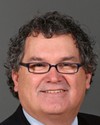Yes. Actually, it's interesting that you bring it up. By no means am I standing here today saying that the link to salmon farming is the sole answer to the decline of salmon on the west coast and the impacts that might have; there certainly are other issues. I myself was personally on the Cheakamus Water Use Planning Committee, but I'd rather talk about our group and the group that we formed with John. Through John's encouragement and time, we started meeting initially discussing the collapse of the Fraser sockeye and potential links to aquaculture. Further to that, our group started looking at improving habitat.
Specifically in our area we're looking at the Squamish River watershed. Through funding that was made available through the federal government we've been able to accomplish some projects in our area. We've carried forward some additional habitat proposals that we believe will increase salmon returns to the Squamish River watershed, which actually is made up of five rivers.
We had a meeting of our group about ten days ago. We went out and looked at one of our projects, which was a salmon spawning side-channel. At that time, there was a viewing platform that had been set up. The day that we went there, we observed people coming down to view the wild salmon, which were spawning chum salmon. It was quite a spectacular thing. There were young children; there were adults—that type of thing.
I think education and habitat improvement constitute one of the key factors for improving our salmon numbers. Certainly that's something that shouldn't be overlooked by this committee. We don't want to just focus on one issue, but I believe that if we can take tiny steps along the way and all work together as a group, we can achieve big things. That's what our small group started out doing, and we've achieved some things that are, I think, quite substantial—little steps that can be built on to make substantial steps.
But I feel it's important that we look at minimizing impacts on wild salmon, and that's why our committee felt that it was a good partnership to bring forward, to try to encourage the two sides to work together and look for closed containment as one option.




